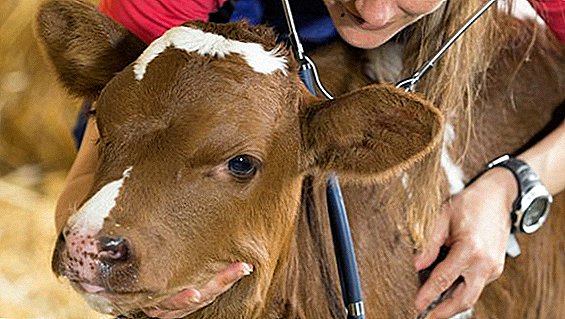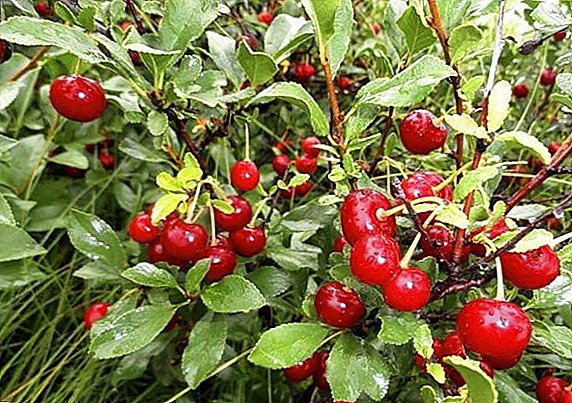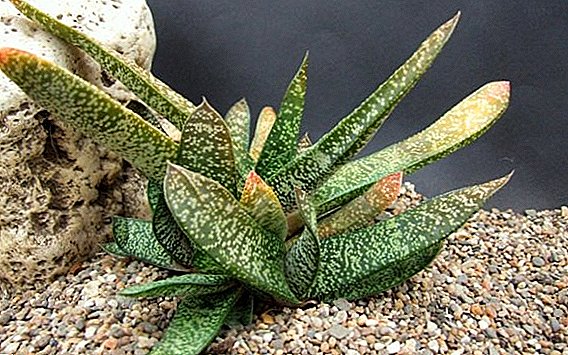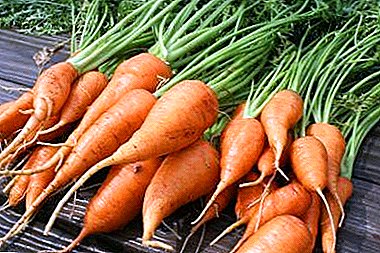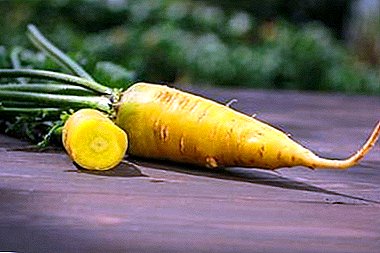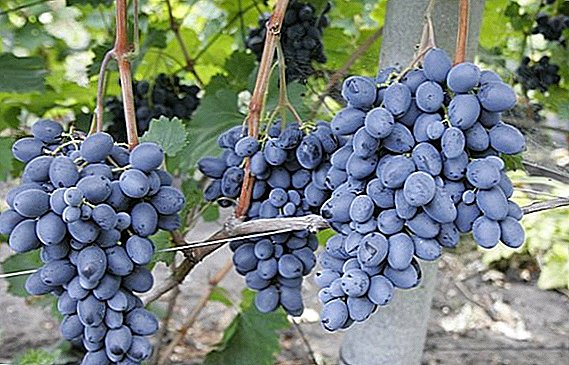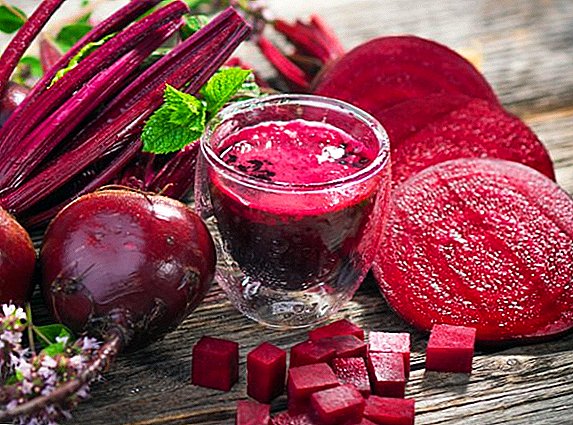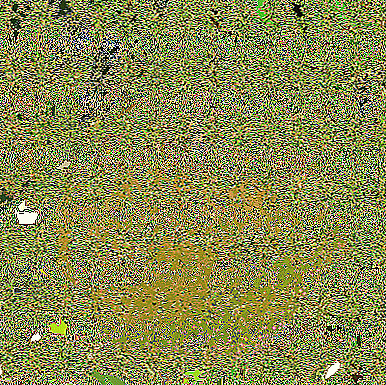
For many years, pears were grown mainly in the European part of Russia. The harsh climate of the eastern regions did not contribute to the spread of the cultural type of these fruits. In Siberia and the Far East, wild plantings (dikki) were the only representatives of the pear.
The situation radically changed in the early twentieth century, when in Khabarovsk breeder A. Lukashov. began work on the cultivation of new regional cultivated varieties. One of the results of his work pear variety Theme, description and photo of the fruit of which - later in the article.
What kind is it?
In terms of ripening pear Theme is a medium autumn variety.
Breeding history and regions of distribution
 For the basis of selection Lukashov A.M. took the local wild species - Ussuri pear. Pollen of this species was used to process the flowers of the variety "Finnish yellow".
For the basis of selection Lukashov A.M. took the local wild species - Ussuri pear. Pollen of this species was used to process the flowers of the variety "Finnish yellow".
In 1917, the first fruits of hybrid seedlings appeared. In the future, this material became the basis for creating a new variety of pears, called the Subject.
In the late 40s, the breeding product was transferred to the State test and recommended for cultivation in the territory Far East and West Siberian regions. In the future, pear Theme spread throughout the eastern territory beyond the Urals.
The following varieties are doing well in these regions: Krasulia, Lada, Favorite Yakovleva, Nursery and Decakrinka.
Description grade Subject
Consider separately the appearance of the tree and fruit.
Tree
Trees given varieties are quite tall. Have a wide round thick pyramid crown.
From the trunk, the skeletal branches diverge at an acute angle from a single node ("whorls"). Tree bark flaky, brown color.
Leaves on young shoots have an ovate shape (rounded base and pointed top), slightly curved, there is a fine serration on the edges.
The dark green outer side of the foliage has a glossy sheen, the lower part of the leaves is rough, partially pubescent (center), and has a light green color. Flowers white pears monochrome, medium size.
Fruit
 Pear varieties Subject in the period of mass fruiting of trees have average size, their weight ranges from 110 to 130 g. Young seedlings give larger fruits - from 150 to 200 g.
Pear varieties Subject in the period of mass fruiting of trees have average size, their weight ranges from 110 to 130 g. Young seedlings give larger fruits - from 150 to 200 g.
Fruits of the variety are somewhat unequal, have a wide wrist shapelight yellow. From the side facing the sun, pears are formed soft reddish flank.
The skin of the fruit is dull, slightly rough to the touch, has many subcutaneous dark points. The stem is long (from 2 to 4 cm), thick, slightly curved.
Fruit pulp white, fine-grained, medium density, juicy, aromatic. Fruits are suitable for the use in fresh form and as a basis for conservation (juice, jam, jam).
The chemical composition of pear varieties Subject:
| Composition | amount |
|---|---|
| Sahara | 10-11% |
| Ascorbic acid | 19.5 mg / 100 g |
| Tanning agents | up to 0.6% |
| Pectic substances | 0,3% |
A photo




Specifications
In the main regions of cultivation (Siberia and the Far East) fruits run out at the very beginning of autumn (early September). In the Urals, in milder climates, the crop is harvested in August.
 Pears of this variety, reaching ripeness, massively showered on the ground. Concerning the crop is removed from the tree as soon as possible.
Pears of this variety, reaching ripeness, massively showered on the ground. Concerning the crop is removed from the tree as soon as possible.
Tastes of fruit are revealed fully after 3-5 days of bedding.
If you are looking for a delicious variety of pears, pay attention to the Cosmic, Marble, Karataevskaya, Kupava and Talgar Beauty.
Crop storage period without special conditions does not exceed 3 weeks. In storage with an artificial climate, the fruits do not lose their properties. within 2 months.
Grade "Theme" - self-infertile. The best pollinators are varieties of pears "Olga", "Fields" and "Palmyra".
Fruit trees Every year. The average yield in the gardens is 12,000 kg / ha (30-40 kg from a tree). The maximum indicator was fixed at the level of 26,000 kg / ha.
Winter hardiness of trees is quite high provided the pears are located on a hill. In the lowlands, plants often freeze slightly.
Resistance grade is good.
It tolerates a variety of adverse weather conditions. - overabundance or lack of moisture in the soil.
The high-yielding varieties of pears include: Duchess pears, Extravaganza, Bere Bosk, Bere Russkaya and Tonkovetka.
Planting and care
 Pears of this variety not particularly demanding to the conditions of growth. They grow quite well on various types of soil.
Pears of this variety not particularly demanding to the conditions of growth. They grow quite well on various types of soil.
Do not require regular watering or drainage of excess moisture.
The only condition for good growth of trees is their location on elevated plots (to prevent freezing).
Care of trees consists mainly in regular spraying, destruction of diseased and dry branches of affected fruit.
Diseases and pests
Pretty sort resistant to defeat //selo.guru/ptitsa/bolezni-p/gribkovye/parsha.html. The remaining diseases characteristic of pear, affect trees to the fullest.
To combat black cancer, bacterial burns, fruit rot, rust and powdery mildew, tree spraying with chemical and biological preparations and methods of agrotechnical treatment of plants and the soil around them are used.
Among the pests primacy hold moth and moth. They are able to completely destroy the crop, if time does not take measures to combat them. Regular ones are considered as the most effective. spraying trees with fungicides.
Desert Rossoshanskaya, Osennaya Yakovleva, Larinskaya, Svarog and Severyanka Krasnoshchekaya demonstrate good scab resistance.
The advantages and disadvantages of the variety. Development prospects.
The main advantages of this class include high winter hardinessenough large fruits for the region of Siberia and the Far East, good yield, resistance to adverse weather conditions.
 Disadvantages can be considered rather mediocre taste fruits, their tendency to fall and short-term harvest yield.
Disadvantages can be considered rather mediocre taste fruits, their tendency to fall and short-term harvest yield.
Currently grade does not get much spread. Used mainly in breeding work.


